Best Compressor Pedal Expert Guide (May 2023)
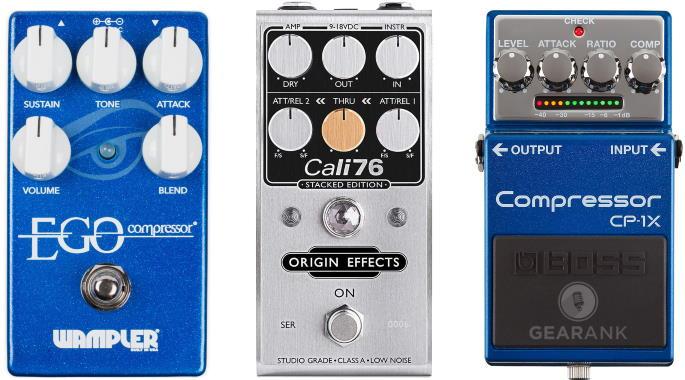
JHS Whitey Tighty Mini
Cons
- Pricier than some comparable pedals
- Susceptible to ground noise
- Fragile due to compact enclosure focused on portability rather than durability
Pros
- Simple and compact
- Relatively quiet for a pedal compressor
- Natural guitar sound with blending options
- JHS signature humorous visual design
JHS humorously describes the Whitey Tighty as "...our take on the classic effect that no one may ever know is on, but when it’s off you feel like your pants are down."
The Whitey Tighty is a transparent-sounding simple compressor pedal that goes from "barely there" to "heavily squished" with just a few knobs to fiddle with. This minimal design also helps save up precious pedalboard real estate. A blend knob helps balance out the compressed signal and your dry signal, enabling more control over your clean tone.
The main strengths of the Whitey Tightey are its simplicity and size. The pedal sounds quieter than most compressors and feels natural because of the blend knob. I also praise the attack for not being too harsh or "plinky" while retaining some spank on chicken picking and funk.
Unfortunately, you will be paying a premium for the respected JHS brand. There are models out there that are cheaper and comparable, but if you want white briefs on your pedalboard, you'll have to shell out a bit more.
Also, the micro-compact design lends itself more to ground noise. This is due to components being closer together, it's just a limitation of physics and this shell design. It's a bit fragile when compared to the more "tank-like" pedals out there. But show some love to the Whitey Tightey Mini and it shouldn't be too much of a problem.
The JHS Whitey Tighty is a fun and welcome addition to any pedalboard. It is a good "always on" type of pedal. You'll almost feel "naked" when this pedal is bypassed; adding to the charm and befitting its underwear-inspired name.
Specifications
- Classic FET Compressor
- Parameters: Volume, Blend, Comp
- True Bypass
- 9-18 Volt DC Adapter (Sold Separately)
| Website | Source | *Rating Value |
| YouTube | SeanPierceJohnson | 94/100 |
Wampler Mini Ego
Cons
- I was a bit disappointed in the limited options for attack and tone. Each only has 2
Pros
- Sound laser-focused on transparency
- Compact
- Nifty Controls - more tone options than similarly sized pedals
The Wampler Mini Ego is a downsized version of the Wampler Ego Compressor pedal, used to great success by country-guitar hero Brad Paisley.
It actually has all of the controls found on its bigger brother. But it ditches variable controls for the “Tone” and “Attack” knobs in favor of two on/off switches. And it also features the same build quality and good parameter adjustments as other Wampler pedals.
The Mini Ego has a very transparent sound, similar to its bigger sibling, but with less complex controls. I love its compact size, freeing up precious pedalboard real estate for other effects. Ease of use I also commend, while having extra switches allow for a bit more control that's not usually available in pedals of its size.
A flaw with this pedal is that the on/off tone control likely isn’t going to work well with every guitar's tone. Besides it's unreasonable to expect it to have in depth controls like expensive compressor pedals. It is an issue that’s avoided with the variable tone control you’ll find on the larger version of the pedal.
Despite the more minimal control scheme versus its bigger sibling, the Mini Ego retains a lot of the character and response that made the original well-loved. We recommend this pedal to those looking for a great compressor pedal that won’t take up too much space on their pedalboard.
Specifications
- Compression type not listed (most likely VCA)
- Parameters: Blend, Sustain, Volume, Tone (on/off) Attack (on/off)
- True Bypass
- 9v Adapter ONLY (no battery compartment)
| Website | Source | *Rating Value |
| Premier Guitar | Jason Shadrick | 80/100 |
Boss CP-1X Compressor
Cons
- Lacks more granular compression control (multiband compression)
Pros
- Pristine, articulate, and smooth-sounding compressor pedal
- Visual feedback on gain reduction
- Best for clean to lightly overdriven tones
- Boss compact pedal durability, dependability, and ubiquity
The CP-1X pedal takes a modern approach to compression. It comes equipped with a multiband processor that analyzes your guitar signal and applies the effect as needed. This means that the pedal adapts to different frequencies, volumes, and playing nuances. This way, it provides just the right level of compression for each situation.
Powering its high-tech design, Boss equipped this pedal with 18-volt internal electronics. This also allows for higher-than-usual headroom. Another noteworthy feature is its gain reduction indicator which is prominent and very easy to spot.
Pristine, articulate, and smooth, are adjectives I'd use to describe this pedal's sound. I'm pleased with how it evens out the dynamics of my playing - making me sound more polished. It works well with different guitar tones. But its transparency is most impressive when used for clean to lightly overdriven tones. Also particularly noteworthy is its easy-to-use layout impressing even Music Radar, which gave this pedal a 5 star rating.
In the studio, I use multiband compressors to fine-tune tracks by only compressing specific frequencies. Given this functionality of multiband compressors, I would've liked a bit more control over which frequencies I'd like to compress.
Nevertheless, Boss chooses to do all the thinking for you in terms of tone and frequencies, providing you with a very pleasing sound.
It is housed in the ever-reliable Boss enclosure. So it brings studio-quality transparent compression to your pedalboard, consistently and reliably. If modern transparency and reliability are important to you, then definitely check out the Boss CP-1X.
Specifications
- Multiband Compressor
- Parameters: Level, Attack, Ratio, Comp
- Buffered Bypass
- 9-Volt Battery or AC Adapter up to 18V(Sold Separately)
| Website | Source | *Rating Value |
| MusicRadar | Total Guitar | 100/100 |
| Sound On Sound | Paul White | 98/100 |
Wampler Ego V2
Cons
- Added upper-frequency harmonics might not be to everyone's liking
Pros
- Added clarity and sparkle, especially for those with Strat and Tele-style guitars
- Highly flexible controls
- Solid feel and build quality
The Wampler Ego V2 is similar to the Mini Ego, with the main difference being that the “control” and “tone” are variable knobs instead of on/off switches. Another important difference is that the Wampler Ego can run off of batteries in addition to a DC adapter. On the other hand, the Mini Ego exclusively runs off of an adapter.
Wampler’s description of the Ego’s tone control leaves much to be speculated on, but from the description in the manual, it seems to be a presence control. Presence is a parameter that controls upper-midrange frequencies. Its purpose is to make an instrument more “present” in a mix that includes instruments in the same frequency range. For example, if there are two guitarists in your band the presence knob will help you be heard over the other guitar player.
I commend it for adding clarity and sparkle, especially for my Tele-style guitar. It also earns my appreciation for the flexibility of its controls.
Brian Wampler's designs have easily been the most studied by modern pedal builders. The Ego V2 ticks a lot of the right boxes with its approach in flexibility and adding a lot of clarity and sparkle to your tone.
Specifications
- Compression type not listed (likely VCA)
- Parameters: Sustain, Tone, Attack, Volume, Blend
- True Bypass
- 9-Volt Battery or DC Adapter
| Website | Source | *Rating Value |
| Gearspace | darkhorse | 100/100 |
| Gearspace | kojak | 95/100 |
Origin Effects Cali76 Stacked Edition
Cons
- Lacks some parameter fine-tuning capabilities of the Cali76 Compact Deluxe
- More expensive than other pedals
Pros
- Professional grade clarity and dynamics
- Impressive stacking of two FET compressors in one stompbox for unprecedented flexibility
- Independent attack/release control knobs for each compressor
The Cali76 Stacked Edition takes compression effect to the next level literally. It stacks two layers of FET compressors in one stompbox. This is meant to appeal to those who utilize their compressor pedal as a tone-shaping tool.
The two compressors run in series. They have independent attack/release controls for tweaking dynamic response. This feature is not something you'll find in conventional compressors. Aside from its dual compressor design, it has similar features to the Cali76 Compact Deluxe. It even has a Dry knob for blending in your dry signal, along with input and output gain controls.
Given its price, it's understandable the main target market of this unit is professional musicians. It is meant to be incorporated with other expensive (but very good) equipment. And even though it's expensive, I'm impressed with its incredible control over clarity and dynamics. It is a very advantageous investment towards getting consistently good tone.
This pedal may be beyond the average price that most guitarists are willing to pay for a compressor pedal. Thankfully, I deem it worthy. And while it gives you two compressors, it loses some of the parameter fine-tuning capabilities of the Origin Effects Cali76 Compact Deluxe.
If one compressor is not enough, and you have the money to spend, then the Origin Effects Cali76 Stacked Edition is highly recommended. It is the definitive pedal for those who desire absolute premium, studio-quality compression.
Specifications
- Dual FET Compressor
- Parameters: Att/Rel 1, Att/Rel 2, Thru, Dry, Out, In
- Signal Conditioning Bypass Mode
- 9-18 Volt DC Adapter (Sold Separately)
| Website | Source | *Rating Value |
| YouTube | Jon is just TOO LouD!! | 99/100 |
| YouTube | Michael W. Westbrook | 98/100 |
My Boss Compressor
CS-3 Compression Sustainer
Cons
- No visual feedback on gain reduction (unlike the Boss CP-1X)
- Can increase the noise floor, especially in extreme settings
Pros
- Familiar, rugged Boss Compact Pedal construction and reliability
- Simple, easy-to-dial-in controls
- Also works on bass guitar
Lately, while getting back into electric guitar after a long hiatus I was able to purchase a bunch of assorted guitar pedals from a friend who wanted to focus on woodworking. Among the sundry of pedals was a Boss CS-3 Compression Sustainer. Now, I never considered incorporating a compressor into my live setup since it can be a subtle effect that most non-musicians wouldn't even hear.
Will the CS-3 change my mind? Let's find out.
The CS-3 is the third iteration of the highly popular Compression Sustainer pedals from Boss. Released in 1986 as a minor update to the CS-2, the CS-3 adds a tone knob and uses a different VCA chip.
As I was setting up the CS-3 to do some tests, I plugged it into my regular 1Spot style power supply. To my dismay, the pedal seemed to malfunction, the LED power indicator was dim and the sound was unpleasingly fizzy. I was worried the pedal was broken!
In a last-ditch effort and after a lot of fiddling, I decided to try to power it with my TU-3… it worked like a charm! This harkens back to my review of the TU-3 and how I didn't see its usefulness as a power supply… well this is one unexpected reason to power my pedals through it.
I don't know the electrical engineering reason why it works with the TU-3 instead of just being powered straight from the daisy chain power adaptor, if anyone knows please let me know in the comment section below.
I'm a bit torn on the Boss CS-3.
On one hand it is a good affordable compressor pedal that does the job in a simple manner. It provides compression and sustain making things sound just a tad bolder. I would describe it as adding MSG to my tone. I can see myself using this as a boost in lieu of an overdrive pedal. This is a fantastic pedal for those who want to color their sound.
On the other hand, it makes me struggle with noise that without this pedal would be soft enough to not worry about. With my simple philosophy of not making things harder than they should be, the Boss CS-3 is best used by advanced tone shapers with good technique who play genres reliant on compression such as funk. Regardless of this, I have now incorporated the CS-3 into my main live setup.
I give this pedal an 82 out of 100. You can hear some rhythm, lead, and bass lines I recorded with it in my extended Boss CS-3 review.
Specifications
- Controls: Level, Tone, Attack, Sustain
- Connectors: 1/4" Input, 1/4" Output, AC Adaptor
- Current Draw: 10 mA (DC 9V)
- Battery: 9V
- Dimensions (WHD): 2.9" x 2.4" x 5.1"
- Weight: 1 lb.
| Website | Source | *Rating Value |
| Gearank | Alden Acosta | 82/100 |
| Lone Phantom | Editor | 80/100 |
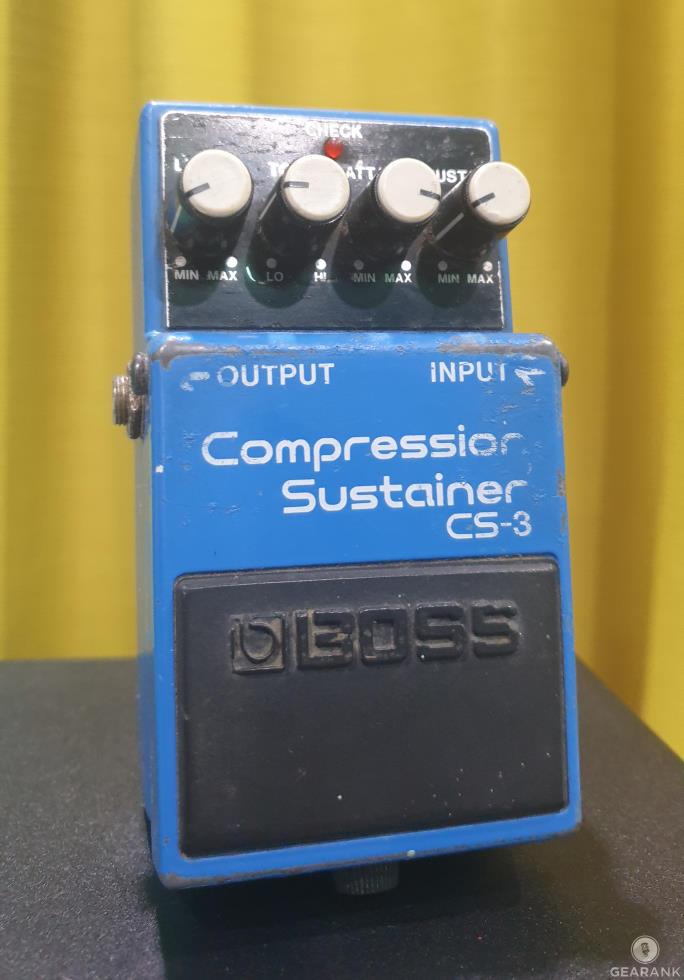
I'm still figuring you out CS-3.
Things To Consider When Buying A Compression Pedal for Guitar
Here we tackle some of the more essential information about compression pedals, to equip you in making an informed purchase for your rig.
-
Before you think about buying a compressor pedal you need to know about the most common parameters a compressor pedal controls. Also, don’t think that just because a compressor pedal has more knobs it’s going to be a better piece of equipment. In fact, some of the best compressor pedals ever only have two knobs. Also, note that some controls are only accessible via internal dip switches.
Volume / Level
The level / volume knob controls the baseline level of volume a compressor pedal boosts your signal to. On lower settings, the overall volume is lower, and on higher settings, it’s higher. This control can either be used as a type of boost, boosting the signal to the point where it clips (distorts), or as a way to limit gain so that a signal doesn’t distort. Some pedals come with blend control, which lets you mix the original and effects sound as you prefer.Sustain / Sensitivity
The sustain / sensitivity knob controls how compressed a signal is. At lower levels, the signal retains more dynamics, so the quiet parts are quieter and the louder parts are louder. At higher levels, it’s the opposite. Note that output and sensitivity controls affect each other.Attack and Release
The attack knob dictates how fast the compression kicks in, and the release knob controls how fast the signal becomes uncompressed once it falls below the noise threshold (controlled by the volume/level knob). A shorter attack time (lower settings) will mean that the effect compressors the signal faster, while with longer attack times the effect takes longer to kick in. Longer compression times help to retain brightness, but there are more dramatic peaks in volume as a result. Short release times can distort low-end frequencies, while longer release times can cause a “pumping” compressed sound.Like any other effect, the key to dialing in usable levels of attack and release is to use both of these parameters in moderation. Also, be sure to experiment with different settings.
-
Something you should be aware of is that there are different types of compression. With that being said, the differences between pedal-based compression units (as opposed to larger rack-mount units) are very subtle. With the exception of multi-band compressors, different types of compression don’t really impact the tone so much as the response of the compression itself. Below are the most common varieties, and while other types of compressor pedals do exist your odds of encountering them aren’t very high.
Optical
An Optical compressor uses an LED and a photocell. The LED grows brighter based on the input volume, and then the photocell “reads” the level of brightness and adjusts the gain based on your settings. These compressors are considered to have a very smooth and organic-sounding attack and release.VCA
VCA stands for Voltage Controlled Amplifier. The circuit used in VCA compressors focuses on precisely controlling the compression, attack, and release of a signal. These pedals are considered to have a less natural tone than other types of compression.OTA
OTA or Operational transconductance amplifier is the most commonly used chip in guitar pedal compressors. Instead of VCA's voltage, OTA compression pedals output is variable current. This is at the core of many of the best guitar pedals like the Xotic SP compressor, Keeley Compressor Plus, Wampler EGO compressor pedal, and more.Valve
Valve compressors use a circuit based on one of the compressors above but with a vacuum tube in the signal path instead of a transistor. These compressors are considered to have a warmer tone than a pedal without a vacuum tube, though as stated above the difference isn’t very dramatic.FET
FET Compression uses a certain type of transistor in order to replicate the response of tube compressors while being more reliable. These compressors are considered to produce a warm tone and organic compression. They’re a good choice if you’re looking to fatten your guitar tone, but we’d recommend another option if you’re looking for a transparent (meaning it doesn’t affect your tone) compression. This type of compression requires more circuitry, so as a result, the few pedals that use it are more expensive.Multi-Band
Contrary to most other types of compressors, a multi-band compressor does have a dramatic impact on your tone. The reason for this is that multi-band compressors only compress certain frequency ranges. For example, this type of compressor can compress high-end response while leaving your mid and bass response unaffected.
-
The question of where various effects should go in a signal chain (guitar pedal order) is a hotly contested one, with musicians having different preferences based on the genre they play, their role in the band, their gear, and their desired tone. And it’s worth thinking about, because even if you have the best guitar compressor pedal you’re not going to get good results unless it’s properly placed in your signal chain.
The general consensus on where to put a compressor pedal is either at the beginning of a signal chain or at its end. Placing a compressor at the end of a signal chain controls the level (volume) or your signal after all of your effects, which may be helpful if you use a variety of pedals. The bad part about putting a compressor at the end of a signal chain is that doing so tends to make the noise produced by your various pedals more audible. Placing your Audio Compressor at the beginning of a chain is less likely to introduce noise into your signal, but at the same time the effects after the compressor aren’t subject to compression.
Combining compression with EQ is commonly used by guitarists to achieve funky cleans. Compression is also often paired with distortion for adding sustain to lead lines. There’s more to the topic than what we’ve gone over here, so it is best to try different combinations and use the ones that sound right to your ears.
-
Once you have more than a couple of pedals, pedalboard real estate becomes a prime concern. Having a pedalboard can be a lifesaver because it makes your pedals easier to activate, which is really important during a live performance. However, a pedalboard is a finite space so there’s a limit to how many pedals you can fit on it.
Because of this, some musicians go for a mini compressor pedal with a smaller footprint. The only real thing you lose with a smaller pedal is that you don’t have quite as many parameters (knobs) to play with, so the tones you can get out of them is a bit more limited. But believe it or not, a good mini pedal can perform just as well as their bigger counterparts. This is especially true with compressor pedals, because many compressors only have two parameters in the first place (the legendary MXR DynaComp is a perfect example of this).
-
While it's not meant for tone improvement, you get dynamic uniformity (less peaks and valleys) from it, which makes your sound more pleasing overall. In addition to that, it adds sustain and can be used to add more punch to your sound. All these advantages make compressor pedals a must have, especially if you play multiple styles.
-
When you’re looking for pedals, you’re going to see the terms “true bypass” and “buffered output” thrown around a lot. Thankfully, these terms are actually really simple to define. A true bypass pedal doesn’t impact your signal when it’s turned off. A buffered output pedal boosts the signal.
Something a lot of musicians don’t know is that once you start using around 20 feet worth of cable you start to lose frequency response, generally in the high-end. Buffered output pedals mitigate this by boosting your signal before it returns to your amplifier.
Some musicians feel that pedals that aren’t true bypass weaken their signal or remove clarity, though in all reality this varies based on the type of circuit used. Pedals that aren’t true bypass are called hardwire bypass, because the signal still feeds through circuitry of the pedal when it isn’t engaged.
Basically, you want either true bypass or buffered output pedals. If you use either true bypass or hardwire bypass pedals we’d recommend getting a boost pedal so that your signal retains volume and clarity.
Parameter Controls (What Does What)
Types of Compression
Using a Compressor Pedal With Other Effects
Pedalboard Space
Does a compressor pedal make you sound better?
True Bypass vs. Buffered Output
Best Compressor Pedal Selection Methodology
The first edition was published in 2017. The current edition was published on May 9, 2023.
We started by looking at the many compressor pedals available from USA based retailers and this resulted in producing a short-list of 30 pedals - all available with current ratings in the Music Gear Database. Then we collated and analyzed relevant reviews and ratings for each pedal, including the most recent feedback. The data we gathered came from over 18,500 sources (a 36% increase over the previous edition), all of which were then processed by the Gearank Algorithm. This resulted in rating scores out of 100 which reflect market sentiment for each pedal. Finally, we selected the highest rated ones to recommend in this guide. For more information about our methods see How Gearank Works.
About the Author and Contributors
Here are the key people and sources involved in this guide's production - click on linked names for information about their music industry backgrounds.
Lead Author & Researcher
Alden Acosta
I'm a drummer and former lead guitarist of the band Callalily, a platinum selling multi-awarded band from the Philippines. I also studied music for 6 years majoring in percussion and jazz studies with a minor in classical piano.
I have over a decade experience in using compression on my guitars in the studio. Although my journey and appreciation for guitar compressor pedals started a bit later, my hands-on approach to pedals and effects has made me see the light on compressor pedals. As of writing this edition, I currently own and have on my pedal board the Boss CS-3.
Contributors
Alexander Briones: Supplemental writing and editing.
Mason Hoberg: Supplemental writing.
Jason Horton: Editing and Illustrating.
Media
Main/Top Image: By Gearank.com using photographs of the Wampler Ego V2, Origin Effects Cali76 Stacked Edition and Boss CP-1X Compressor.
The videos above have been embedded in accordance with YouTube's Terms of Service.
The individual product images were sourced from websites, promotional materials or supporting documentation provided by their respective manufacturers.



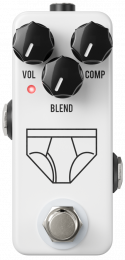
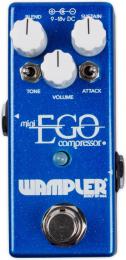
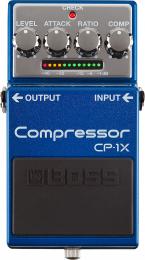
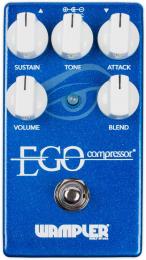
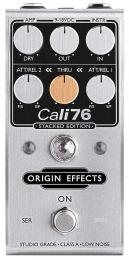
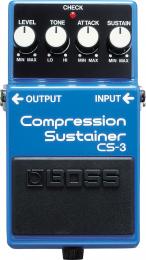
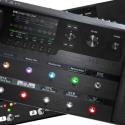
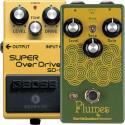
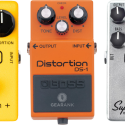
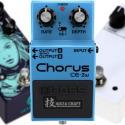
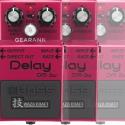
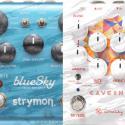

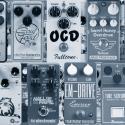
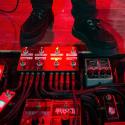
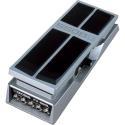
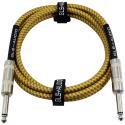
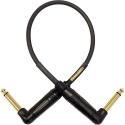





Comments
Publication of our August
Submitted by Jason Horton on
Publication of our August 2022 Edition resulted in the following pedals coming off the recommended list due to being out-ranked by the models above:
Our February edition saw the
Submitted by Jason Horton on
Our February 2021 edition saw the following compressors removed from the recommended list above, but you can still see our analysis of them:
People seriously overlook the
Submitted by Moe (not verified) on
People seriously overlook the Pulp N Peel. It's not just a great compressor with an awesome blend knob, it just clean up the signal in an extremely musical way. I've been nothing but happy with mine.
As a result of our May 2020
Submitted by Jason Horton on
As a result of our May 2020 update, the following pedals came of the recommended list above, but you can still take a look at our analysis of them:
Great review! Thx! I'm
Submitted by Manuel Ugarte (not verified) on
Great review! Thx! I'm already craving the Mooer Yellow Comp!
Thanks for all you do - this
Submitted by Dan (not verified) on
Thanks for all you do - this is awesome!
As a result of the August
Submitted by Jason Horton on
As a result of the August 2018 update of this guide the following compressor pedals came off our recommended list above, but you can still read what we have to say about them:
In all my years of gear
Submitted by Daniel (not verified) on
In all my years of gear monging, one of the best pieces of gear I’ve come across, still have (after years of checking what else is out there), and love to pieces is the Diamond Compressor. I am amazed it’s not on your list, unless it’s because you already have a blatant copy of it on your list - the Mooer Yellow Comp. ???
Everyone has their personal
Submitted by Jason Horton on
Everyone has their personal preferences and seeing as how you stated yours so strongly I decided to publish our rating for the CPR1 (Link to Amazon) which is the one I think you're referring to - see the Gearank rating here.
As it happens, the rating was higher than I estimated during our short-listing process, however it was just under the score we needed to recommend it in this guide - but it didn't miss by much and is highly regarded by many guitarists.
I understand your explanation
Submitted by John Nickell (not verified) on
I understand your explanation about leaving off the Cali 76 but if your gonna have a best compressor list it’s bogus with out it. The whole point to having a list like this is to help people find the best not the most available. If people need advice on generic crap , they can go to GC for that. I guess this is the Walmart of websites. I’m sure u have some reason to funnel business to these giant retailers and pedal makers, which also makes it bogus . The Cali is the best out there , don’t pay attention to this list.
The Origin Effects Cali76 was
Submitted by Jason Horton on
The Origin Effects Cali76 was added to our short-list after this guide was published because it became available from more sources (you can also now buy it at thomannmusic.com) and we have relaxed our availability criteria slightly.
It is a strong contender and could well be included in a future update.
You can see it's current rating here.
We've just published a major
Submitted by Jason Horton on
We've just published a major update where we included the Cali76 on our short-list, however it just missed the cut due to its ratings not being high enough to recommend - those ratings came from over 70 sources.
It didn't miss by much and if we had extended the recommended list to 12 pedals it would have been included.
MXR Bass/Studio Compressor
Submitted by Bob O. (not verified) on
MXR Bass/Studio Compressor meets your Big Box Store criteria, and is one of the better compressors on the market.
This guide is only for
Submitted by Jason Horton on
This guide is only for regular Guitar compressors, not for Bass Guitar - that's why the MXR M87 Bass Compressor was not included.
You don't need a battery
Submitted by Dan (not verified) on
You don't need a battery compartment to run the Mooer Yellow Comp with a battery. You just need a 9-volt battery snap connector. It may drive you crazy if you're anal but it works. And replacing the battery takes only a few seconds.
What about the new Keeley
Submitted by Peter Middleton (not verified) on
What about the new Keeley Compressor Plus? I'm interested in trying a new comp, that or the Xotic SP probably (I have a newish script MXR Dyna Comp I'm using now, which is OK but I'd like a blend control)
The Keeley Compressor Plus
Submitted by Jason Horton on
The Keeley Compressor Plus was too new for us to include in our detailed analysis at the time we published this guide, however the early reports are very positive.
Thank you to everyone who has
Submitted by Jason Horton on
Thank you to everyone who has provided feedback so far on this guide, both here and through other channels.
As a result we re-examined the research methods we used (we were trying a new process) and found we had missed the Keeley 4 Knob Compressor Pedal which should have been included at time of publication.
We've corrected the oversight and added it to our list of recommended compressor pedals today.
Where is the Bogner Lyndhurst
Submitted by Jason Upchurch (not verified) on
Where is the Bogner Lyndhurst compression pedal in this shootout ? It is sold at most major music chains and is one of the best sounding compressor pedals made.
It looks like it could be a
Submitted by Jason Horton on
It looks like it could be a good pedal, however it only started hitting the stores about 8 weeks prior to us doing the research for this guide and as a result there were insufficient review sources for us to rate it.
In case you didn't know, our ratings aren't based on our own opinions, they're based on a statistical analysis of the opinions of musicians who have used the gear and provided feedback at online retailers, online publications, review sites, forums, YouTube and more - we explain this in a bit more detail in How Gearank Works.
Look, you covered the low end
Submitted by RJ Reid aka Wil... (not verified) on
Look, you covered the low end units somewhat okay, but there are way better units in the low end than you reviewed and the idea you left out Origin Effects cali76 comp limiter is shameful...its the best compressor on the market out there and absolutely blows away any of those 11 you chimed on about...granted, you covered the low end models for bedroom players and Wampler and Empress make fine units with a larger price tag, but nothing built out there compares to the Origin Effects Cali76 for the serious player, the professional working musician, well its the Cali76 comp/limiter amp made by Origin Effects in the UK..its the best comp/limiter on the market for the professional or semi pro guitarist or bassist. It's sinfull they got no mention from you...as a pro player, I am shocked you would omit Origin Effects Cali76 comp/limiteramp models from this article.
Thanks for giving me the
Submitted by Jason Horton on
Thanks for giving me the opportunity to mention Origin Effects because although they are a well regarded brand, they do not meet our selection criteria mentioned in the Methodology section above. Specifically, the Call76 and its variants are not available from major online American music shops - you can't buy them at Guitar Center, Sweetwater, zZounds or Musicians Friend.
They are available from a few 2nd level retailers and on platforms that support third party sellers such as Reverb and Amazon (affiliate link).
We deliberately use narrow selection criteria like these in order to ensure our recommendations will be readily accessible - you can walk into any major music store in the USA and generally expect to see the brands we talk about. If we didn't do this we'd end up recommending many boutique products that would be hard for most people to find.
Paid 99 bones on the mxr was
Submitted by Sam Gist (not verified) on
Paid 99 bones on the mxr was so noisy I had to remove it from my board.Got a second hand Boss CS3 from the flea market... Great pedal. Dont sleep on the budget pedal. Damm near every pedal prince used was a budget pedal.
The Boss CS-3 was one of the
Submitted by Jason Horton on
The Boss CS-3 was one of the pedals that made it onto our short list, in fact had we made 12 recommendations instead of 11 then it probably would have made the cut, but as with all our guides we have to take a decision and set the line somewhere.